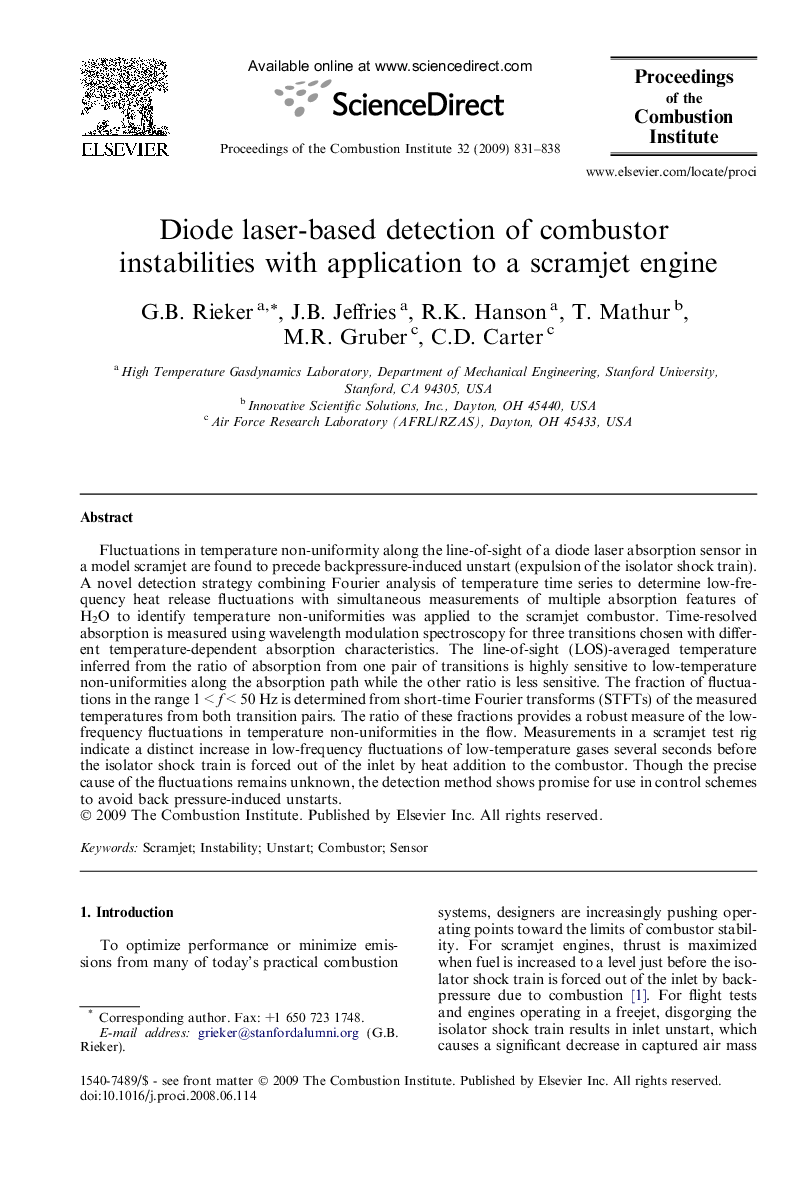| Article ID | Journal | Published Year | Pages | File Type |
|---|---|---|---|---|
| 6679480 | Proceedings of the Combustion Institute | 2009 | 8 Pages |
Abstract
Fluctuations in temperature non-uniformity along the line-of-sight of a diode laser absorption sensor in a model scramjet are found to precede backpressure-induced unstart (expulsion of the isolator shock train). A novel detection strategy combining Fourier analysis of temperature time series to determine low-frequency heat release fluctuations with simultaneous measurements of multiple absorption features of H2O to identify temperature non-uniformities was applied to the scramjet combustor. Time-resolved absorption is measured using wavelength modulation spectroscopy for three transitions chosen with different temperature-dependent absorption characteristics. The line-of-sight (LOS)-averaged temperature inferred from the ratio of absorption from one pair of transitions is highly sensitive to low-temperature non-uniformities along the absorption path while the other ratio is less sensitive. The fraction of fluctuations in the range 1 < f < 50 Hz is determined from short-time Fourier transforms (STFTs) of the measured temperatures from both transition pairs. The ratio of these fractions provides a robust measure of the low-frequency fluctuations in temperature non-uniformities in the flow. Measurements in a scramjet test rig indicate a distinct increase in low-frequency fluctuations of low-temperature gases several seconds before the isolator shock train is forced out of the inlet by heat addition to the combustor. Though the precise cause of the fluctuations remains unknown, the detection method shows promise for use in control schemes to avoid back pressure-induced unstarts.
Keywords
Related Topics
Physical Sciences and Engineering
Chemical Engineering
Chemical Engineering (General)
Authors
G.B. Rieker, J.B. Jeffries, R.K. Hanson, T. Mathur, M.R. Gruber, C.D. Carter,
